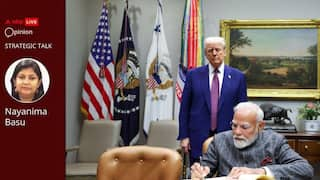Budget 2023: What Awaits India’s EV Sector
Currently, the Indian EV market is at a valuation of $3.21 billion, which is projected to hit $76 to $100 billion by 2030.

As the fight against climate change intensifies, we are witnessing an increasing adoption of electric vehicles (EVs) against their internal combustion engine (ICE) counterparts. In 2022, India witnessed exponential growth in overall EV sales. Over the last year, EV sales have increased by over 210 per cent, with more than 14 lakh electric vehicles plying on Indian roads today.
The significant growth drivers for the industry include the evolution of EV technology, translating into cutting-edge products for both commercial and personal use. And to further augment this, there have been initiatives from the government that made owning an EV possible and economical. Some of these initiatives include the FAME II and PLI schemes, tax benefits, and support for the localization of EV components.
Nevertheless, ICE vehicles are marginally outnumbering EVs across the country, given the current adoption rate of electric vehicles is 2 per cent. Considering India’s EV target of electrifying 70 per cent of commercial vehicles, 30 per cent of total passenger cars, and 80 per cent of total 2Ws and 3Ws by 2030, government and industry players together need to intensify their efforts to realize our ambition of clean and green mobility in India.
India's Current EV scenario
The EV industry in India has grown by leaps and bounds over the last few years. Today, we have over 350 EV manufacturers, which include leading OEMs and evolving startups. With the growing manufacturing scope of electric vehicles, various EV component manufacturers have also shown remarkable success in developing indigenous advanced battery technologies.
As of now, we have over 14 lakhs EVs on road, recording the highest adoption rate of over 4 percent in 2022 against just 0.7 percent in 2019. The numbers are estimated to reach 14-16 million EV sales every year by 2030. We will see a marked boost in the total EV market share, from the current 2 percent up to 40 percent by 2030.
One of the significant reasons for this substantial rise in adoption rates are the subsidies and demand incentives under the government’s FAME II scheme. Through this scheme, the government outlaid a budget of Rs 10,000 crores (subsidies and incentives) to support 1 million 2W EVs, 0.5 million, 3W EVs, 55,000 passengers EVs, and 7,000 electric buses. Currently, there are over 130 EV models (across 2W, 3W, and 4W platforms by over 50 registered OEMs) approved by FAME II.
Speaking of the current tax scene in the industry, the GST rate on EV buyers is 5 percent, and basic customs duties on lithium-ion cells and li-ion battery packs are 20 percent. Considering the increasing demand for EV components, the government has set the import duty at 15 percent. Furthermore, the import duty and GST levied on cell components are 5-10 percent and 18 percent, respectively. All these factors, such as GST, import duties and customs duties, affect the production of batteries, and the manufacturing and sales of EVs on a broader level.
Currently, the Indian EV market is at a valuation of $3.21 billion, which is projected to hit $76 to $100 billion by 2030. According to reports, the electric 2Ws will constitute 40-50 percent and 4Ws (passenger vehicles) will constitute 15-20 percent of EV adoption by 2030. To consider the projected revenue pool, the auto OEMs stand at 40-50 percent, battery manufacturers at 13 percent, and charging infrastructure at 8 percent.
What Awaits India’s EV Sector In Budget 2023
As India paces up ambitiously to hit the 2030 target, the EV industry expects to see notable policies and amendments. To start with, the government should look into revising the customs duties, import duties, and GST levied on li-ion cells, li-ion battery packs, li-ion cell components, and EV components. However, the revised customs duties should be in reference to the volume of imports and time period. The current 18 percent GST on li-ion cells, cell components, and battery packs should be exempted to facilitate the battery manufacturers in the production of EV batteries. To further support the battery assemblers, initiating sale-based incentives could also support and expand the scale of battery manufacturing.
Considering the high GST rates for logistics and last-mile service providers, the reduction of taxes, and introduction of incentives would boost EV adoption in the sector over the years. In the commercial EV segment, we expect to see revised subsidies and incentives, especially for LCVs.
Battery-as-a-service (BaaS) for fixed batteries will help bring down the upfront cost of EVs and will enable buyers to pay for the use of batteries rather than spending money on the upfront purchase of the battery. BaaS for fixed battery with mobility-as-a-service (MaaS) would ensure faster adoption of EVs for the last-mile fleet operation businesses.
Speaking of possibilities of making EV financing cheaper, the government should include EVs in Priority Sector Lending (PSL), making electric vehicles more affordable for the masses.
Lastly, the incentives and financial enablers issued by the government must not be limited to the volumes of production committed by manufacturers, but also consider the technological superiority of the vehicles and battery technologies in terms of safety, longevity, and fast charging as to ensure only the best reaches the final customer.
The author is the Director and Co-Founder at Log9 Materials, a Bengaluru-headquartered deep-technology and advanced battery technology startup.
Disclaimer: The opinions, beliefs, and views expressed by the various authors and forum participants on this website are personal and do not reflect the opinions, beliefs, and views of ABP News Network Pvt Ltd.





































